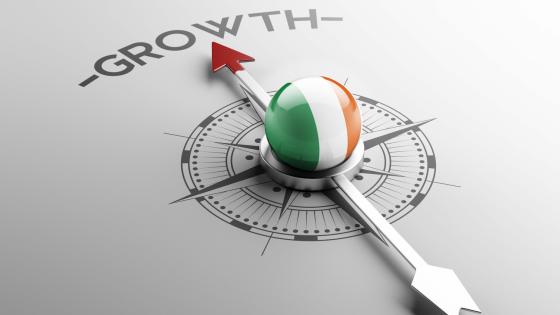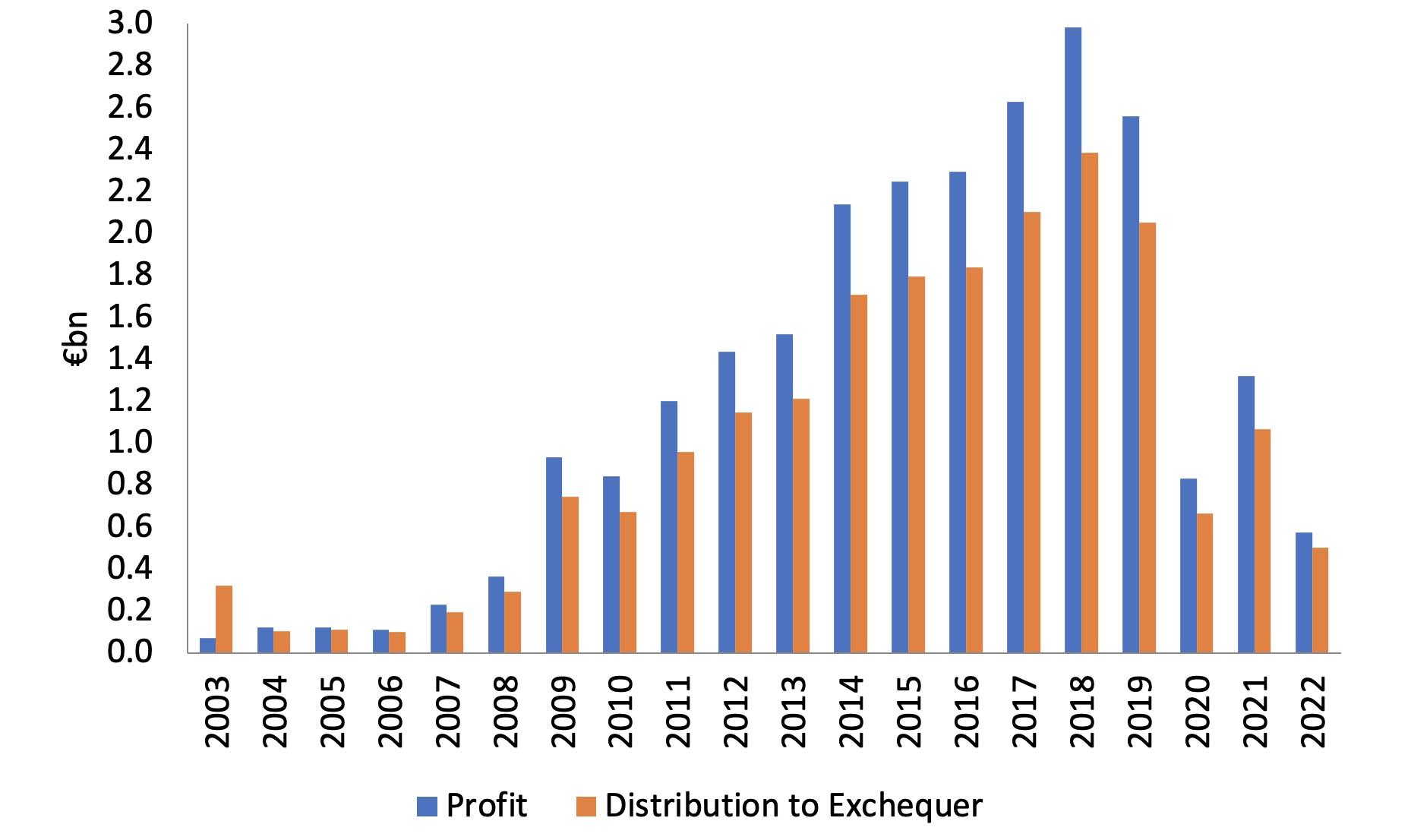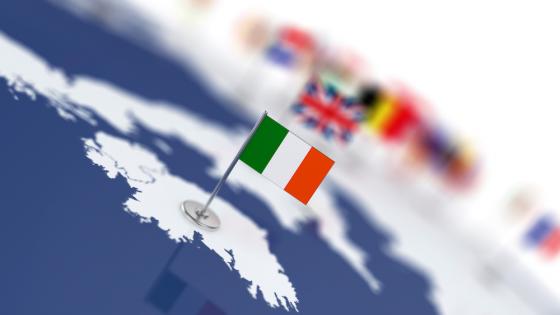Although conventional GDP measures greatly exaggerate Ireland’s prosperity, the macroeconomic advances that have been made would have seemed impossible when Ireland joined the European Economic Community half a century ago (Figure 1) (O’Rourke and Ó Gráda 2021).
This is not to imply that Europe has been the sole agent of Ireland’s economic transformation. Instead, it seems that Ireland’s macroeconomic fortunes – for good and ill – over this period have been largely shaped by its embrace of globalisation, in particular the openness to capital and financial flows. The effects of this openness have been mediated by the exchange rate regimes, the Single Market, and the Structural Funds of the European Union and its predecessors (FitzGerald and Honohan 2023, Coricelli et al. 2014).
Figure 1 Ireland: Employment growth in five-yearly intervals, 1947-2022
The Irish policymakers who advocated membership more than 60 years ago saw progress to free trade with Europe as crucial in expanding the market for Irish agriculture and industry. Agriculture clearly benefitted from the high prices secured at the outset; but the expectation that value added processing of agricultural products would drive industrial expansion was initially disappointed. Removing the barriers to trade was expected to force efficiency improvements on Irish firms; but many of the old firms did not long survive.
Instead, inward foreign direct investment (FDI) by firms that would supply both the European and other foreign markets, encouraged by grants and especially by low rates of corporation profits tax, proved to be the distinctive characteristic of Ireland’s industrial modernisation.
The European Single Market, unleashed at the start of 1993, greatly deepened the process of European trade integration and increased the attraction of Ireland as an export platform for foreign-owned firms. Already an especially favoured destination for FDI from the US, Ireland experienced a disproportionate inflow in the 1990s as the Single Market came into effect.
Free access to the European market turned out to be only a part of the benefit of this globalisation of production, as new firms increasingly supplied a world market. Arriving US-based firms featured new fields of production such as information services, information technology, medical instruments, and pharmaceuticals.
Though its true impact is often overstated due to misinterpretation of tax-related accounting practices (Honohan 2021, FitzGerald 2023), inward FDI has made a major contribution to rising living standards in the form of growing employment, tax revenue, and knowhow. The US and other foreign firms did not create the Celtic Tiger period of export-led employment growth in the 1990s, but their growth was a significant part of it. They did not provide much insulation of the economy from the Global Financial Crisis, but the steadily growing tax they paid greatly helped strengthen the public finances – not least during the pandemic years of 2020–2 and beyond (Samarakoon 2023, Tørsløv et al. 2023).
In time, new or growing Irish-owned firms in such fields as agribusiness, building materials, and air transport also became firmly established internationally, and again these took full advantage of the globalised world economy; not just Europe.
Translating this transformation of productive forces into broad-based and sustained prosperity called for steps that lay largely in the hands of the national government, rather than with the EU. Although the report card has some successes, notably including an expanded provision of education from the 1960s, there are many persistent shortcomings, not least in housing policy, in environmental protection, in infrastructure, and in regard to lack of competition in service sectors such as the law.
A particular area of weakness has been macroeconomic stability. Fiscal policy mistakes following the oil price rises of the 1970s led to a loss of competitiveness and to a debt overhang which resulted in a deep macroeconomic crisis for most of the 1980s (arguably exacerbated by the high interest rates resulting from devaluation risk within the European Monetary System).
With macroeconomic stability restored, the benefits of the Single European Market, of the EU Structural Funds,
and of falling transportation and communications costs helped usher in the Celtic Tiger period. Competitive and productive, the business sector at last ended the involuntary joblessness that had been endemic.
But, as the new millennium began, government again allowed macroeconomic imbalances, associated with reckless and under-supervised banking, to re-emerge in the later years of the catch-up, leaving Ireland disastrously exposed to the Global Financial Crisis. Once again, it was openness to the global economy, and in particular to the vast available financial flows, that shaped Ireland’s economic fortunes, this time not in a good direction.
Even the shocking set-back from the banking crisis that hit in 2008 and morphed into a fiscal and macrofinancial crisis during 2010 has faded into the background as the economy has shown a strong recovery continuing to the present. The heated debates that raged over the Irish government’s bank guarantee and the payment of bondholders of the failed Anglo Irish Bank are no longer in the political foreground.
Ireland’s solid economic recovery from crisis depended on the favourable interest rates which were eventually applied to the borrowings made from European sources to meet the costs of the downturn, including the surge in government borrowing as automatic stabilisers kicked in and as the burden of bailing out the creditors of failing banks began to be felt. Although the standard interest rate surcharges applied by the IMF to large and prolonged borrowings by member states were at first used to price the loans from European funds, the latter were soon repriced at close to the risk-free market rate (Honohan 2019, Eichengreen 2010).
A notable milestone occurred in September 2023 as the last of the special long-term floating rate notes (FRNs) issued by the Irish government ten years earlier were finally disposed of by the central bank, bringing to an end the central banking dimension to the financial post-crisis financing arrangements. These FRNs enabled a very large block of debt to the eurosystem related to the bank failures to be refinanced at very low interest rates over the following years.
Box: How FRNs were better than Promissory Notes for both borrower and lender
The FRNs were issued in exchange for non-marketable promissory notes (PNs) that had been used as collateral for the protracted and very large emergency liquidity assistance that, thanks to euro area membership, the central bank had been able to give to the failing IBRC (formerly Anglo Irish Bank). The central bank seized this collateral when IBRC was put into liquidation in 2013, and exchanged it for the FRNs.
The financial engineering behind this exchange was beneficial to both sides (Honohan 2023). It gave the central bank a more conventional marketable government security to be held on its balance sheet, while pushing out the maturity of cash payments by the Irish Exchequer.
At the time of issue, the estimated market value of the FRNs and the PN payments were equal. But the debt servicing payments of the FRNs were backloaded relative to the PNs, with most of the value coming from the coupon, which was set at 263 basis points above 6-month EURIBOR, reflecting the credit risk premium on Irish debt at the time. The subsequent fall in the risk-premium resulted in a sharp increase in the market value of the FRNs. This was amplified by the decline in euro area interest rates generally in 2014-5. Since most of the FRNs were still held by the Central Bank of Ireland when the market yields fell, the capital gain stayed in the Irish public sector widely defined. Over the period 2013-23, as it disposed of the FRNs (gradually in order to avoid any adverse effect on financial stability), the central bank earned about €17 billion from the FRNs, of which about a quarter was net interest income and the remainder realised capital gain (see Figure 2). (It is sometimes thought that the gain has been offset by the fact that the bonds have been sold to the National Treasury Management Agency, but this is a fallacy that neglects the reduction in interest servicing of the debt and the difference between market value and face value of government debt.)
When it was announced, the PN/FRN arrangement was criticized by some as coming close to a monetary financing of a government obligation, especially because of the potential duration of the Central Bank’s holding of the FRNs. However, in the end the FRNs were all disposed of fully eight years before the PN payment schedule would have been completed. Besides, it has to be recognized that the government had assumed the banking debt on the 2008 advice of the central bank in order to protect financial stability; it would clearly have been perverse in 2013 to insist on an accelerated and potentially disruptive repayment of this debt.
Figure 2 Central Bank of Ireland profit, 2003-2022
The four freedoms of movement within the European Union – of goods and services, of people, and especially of capital – are thus all ingredients in the story of Ireland’s macroeconomic transformation, which has happened in an environment significantly shaped by EU economic legislation and financial support. But arguably more important has been the way in which joining the EU catalysed a much larger opening up of the Irish economy to the opportunities and risks of an increasingly globalised world.
References
Coricelli, F, L Moretti and N Campos (2014), “How Much do Countries Benefit from Membership in the European Union?”, VoxEU.org, 9 April.
Eichengreen, B (2010), “Ireland’s rescue package: Disaster for Ireland, Bad Omen for the Eurozone”, VoxEU.org, 3 December.
FitzGerald, J (2023), “National Accounts for a Global Economy: The Case of Ireland”, in N Ahmad, B Moulton, J D Richardson and P van de Ven (eds), The Challenges of Globalization in the Measurement of National Accounts, University of Chicago Press.
FitzGerald, J and P Honohan (2023), Europe and the Transformation of the Irish Economy, Elements in Economics of European Integration, Cambridge University Press).
Honohan, P (2019), Currency, Credit and Crisis: Central Banking in Ireland and Europe, Studies in Macroeconomic History, Cambridge University Press.
Honohan, P (2021), “Is Ireland Really the Most Prosperous Country in Europe?”, Economic Letter 2021/1, Central Bank of Ireland.
Honohan, P (2023), “Distinctive Features of the Irish Banking Crisis”, Paper presented to the 7th Annual Riksbank-Nederlandsche Bank-Bundesbank Macroprudential Conference, Stockholm, August.
O’Rourke, K and C Ó Gráda (2021), “Independent Ireland: A Centennial Perspective”, VoxEU.org, 11 May.
Samarakoon, N (2023), “The Effect of the Closure of the Double Irish Arrangement on the Location of U.S. Multinational Companies’ Profits”, University of Michigan.
Tørsløv, T, L Wier and G Zucman (2023), “The Missing Profits of Nations”, The Review of Economic Studies 90(3): 1499–1534.




